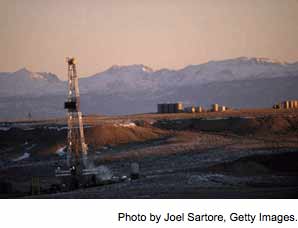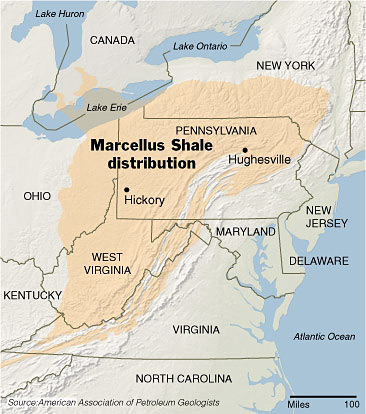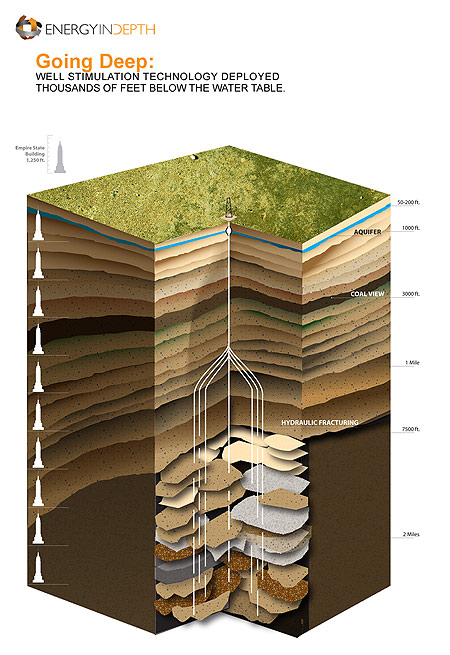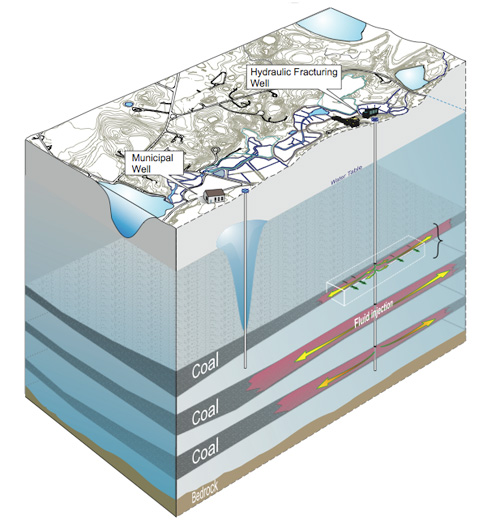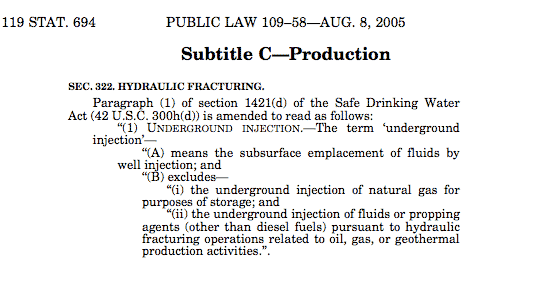Biblio
"New York state environmental officials announced Friday that they would impose far stricter regulations for a new type of natural gas drilling in the state’s only two unfiltered water supplies, making it highly unlikely that any drilling will be done in the Catskills watershed that supplies drinking water to New York City...
...Although they did not impose an outright ban, state officials said that any natural gas company would have to conduct a separate environmental impact review for every well it proposed to drill in either watershed. In other areas, companies would face a far less cumbersome permit process that would rely on the state’s own environmental assessment of where drilling can be allowed...
...With a major controversy surrounding the proposed drilling out of the way, state officials said that they expected to release their final regulations on hydraulic fracturing by the end of the year after considering more than 14,000 public comments.
While it stirred deep opposition in New York City and nearby counties, the drilling drew substantial support from many upstate residents who argued that the benefits would far outweigh any risks given the weakness of the economy.
The conservation department’s commissioner, Pete Grannis, said that landowners’ property rights had weighed heavily in the decision not to issue a ban on drilling in the two watersheds. He said that about 70 percent of watershed property is privately owned and that a ban would have undoubtedly brought on lawsuits from owners deprived of lucrative leasing deals with gas companies.
“At the end of the day, an outright ban risks very substantial litigation,” he said.
Instead, the department decided to add more scrutiny to any potential application to drill in the two areas, he said.
But while the well-by-well environmental reviews will be a deterrent to the drilling, environmental groups were not claiming victory. Kate Sinding, a senior attorney with the Natural Resources Defense Council, said nothing but a ban would ensure that gas companies do not exploit the watersheds in the future.
“If they get into the shale and find it productive, they’re going to knock on the door of the watershed,” she said. “This announcement puts off for another day a decision that could be made today"...
...Jim Smith, a spokesman for the Independent Oil and Gas Association of New York, called the state’s regulatory stance “excessive and unnecessary.”
...Deborah Goldberg, an attorney with Earthjustice, an environmental law firm, said the final SGEIS must include substantial changes to account for the cumulative effect of drilling thousands and perhaps tens of thousands of Marcellus wells in New York. If not, the firm will help spearhead a legal challenge, most likely in state Supreme Court in Albany.
That would involve filing an Article 78 Proceeding challenging the DEC's adherence to the State Environmental Quality Review Act.
See: Eileen Millett, Toxic Tort Litigation Blog.
The challenge for attorneys and for courts will arise as communities grapple with:
- Managing the use of water, water withdrawals, what authority controls and who regulates;
- Impacts if any on waterbodies and aquatic life in affected water bodies accepting chemical fluids of varying composition;
- Adequacy and availability of treatment and pre treatment facilities.
See: Dave Cohen. Energy Bulletin. "Shale Gas Shenanigans" Mar 29 2010.
Environmentalists have long contended that the natural gas drilling method known as hydraulic fracturing — or “fracking” — poses a danger to drinking water supplies for millions of Americans.
Alarming reports of water contamination in states where such drilling is common, including Colorado, Pennsylvania and Wyoming, have exacerbated their fears.
Environmentalists believe disclosure rules will help them prove that their long-held claims about the inherent dangers of fracking are true. If testing finds an unusual chemical in a private water well, for example, it is far easier to make a connection to a nearby drilling operation that uses the same chemical.
Gas firms, despite their concerns over revealing proprietary chemical formulas to government regulators, acknowledge that there is a “fear of the unknown” when it comes to fracking, and they have come under increasing pressure to be more forthcoming about their operations. Many, but not all, now view disclosure as a way to build public trust, and to prove what numerous state and federal studies have already found: that fracking isn’t responsible for water contamination.
Comment
Arkansas Rule B-19
By Robert Finne on Dec 17, 2010 11:03:56 AM
The new Arkansas rule, like the Wyoming rule, is a gift to drillers from state regulators. It allows drillers to publicly say they are disclosing while they have a gaping loophole that allows them to arbitrarily decide what to disclose.
What this means is a driller can pick chemicals in his mix and declare them "trade secret" at which point he can say its a "Biocide" without actually revealing which biocide it is. There are hundreds if not thousands of chemicals in the biocide family.
Some are harmless and some are known carcinogens. The reason these companies say they need to maintain "trade secrets" is so that other companies don't get their formulas but their logic is flawed.
Who extracts the gas depends on who has the lease for the minerals. It's not as if someone is going too get their gas if they have their formula. Thats pretty simple.
The act of declaring "trade secret" only prevents someone from physically stealing a formula through industrial espionage. If a company reverse engineers or discovers by trial and error they are free to use it. Only a patent would prevent a competitor from duplicating a formula.
The ONLY reason to hide behind "trade secret" is to prevent the information of what they are using from becoming public knowledge.
Statoil is one of the large companies being investigated by the U.S. House Energy and Commerce Committee to see if the gas extraction method known as hydraulic fracturing, or fracking, is a hazard to groundwater drinking supplies.
Statoil is a multinational energy corporation based in Norway. In 2008, Statoil acquired a 32.5% interest in the Marcellus shale gas acreage from Chesapeake Energy Corporation.
See: Marcellus Shale Gas
Sharon Daggat and her husband have a 52 acre farm, 38 acres used as a vineyard, in the Steuben County town of Pulteney. They are concerned about a permit that would allow Chesapeake Energy to store hydrofracking wastewater in an empty natural gas well next to their property. Their property is less than a mile west of Keuka Lake. They fear contamination of their well water and damage to their vineyard.
Sharon Daggat of Pulteney, NY gives testimony.
Video by Stephen D. Cannerelli.
Superior Well Services is one of the large companies being investigated by the U.S. House Energy and Commerce Committee to see if the gas extraction method known as hydraulic fracturing, or fracking, is a hazard to groundwater drinking supplies.
Superior Well Services, Inc. board faces investor investigation.
After the announcement to take over Superior Well Services, Inc. (NASDAQ:SWSI) by Nabors Industries Ltd. an investigation on behalf of current investors of Superior Well Services, Inc. (Public, NASDAQ:SWSI) over possible shareholder claims based on breach of fiduciary duty by certain members of the Superior Well Services board of directors in connection with their attempt to sell Superior Well Services, Inc. (NASDAQ:SWSI) was announced.
If you are a current investor in Superior Well Services, Inc. (NASDAQ:SWSI) shares, who purchased your SWSI stock prior to Monday, August 09, 2010, and/or have information relating to the investigation, you have certain options and you should contact the Shareholders Foundation, Inc by email at mail@shareholdersfoundation.com or call +1 (858) 779 - 1554.
Fracturing Systems: Hydraulic fracturing is a process of pumping water, oil, and/or gases with a proppant at sufficient pressure to create a fracture in a chosen formation. The goal is to create and prop open the fracture.
Thousands of the largest water polluters in the United States are outside the Clean Water Acts reach because the Supreme Court has left uncertain which waterways are protected by that law.
As a result, some businesses are declaring that the law no longer applies to them. And pollution rates are rising. About 117 million Americans get their drinking water from sources fed by waters that are vulnerable to exclusion from the Clean Water Act.
See: New York Times, February 28, 2010. "Rulings Restrict Clean Water Act, Foiling E.P.A. | Mixplex
"We are, in essence, shutting down our Clean Water programs in some states. This is a huge step backward. When companies figure out the cops can't operate, they start remembering how much cheaper it is to just dump stuff in a nearby creek."
--Douglas F. Mundrick, EPA Lawyer.
Sustainable Otsego is a loose, minimally structured network of local activists and supporters who seek to promote sustainable practices in the rural Leatherstocking region focused on Cooperstown and Otsego County, New York. Its' listserv provides a forum for the discussion of sustainability issues.
Includes links to expert opinions, products and chemicals fact sheets and current events.
Amy Mall. Switchboard. Natural Resources Defense Council (NRDC).
Articles tagged hydraulicfracturing posted by Amy Mall, Senior Policy Analyst, Boulder, Colorado in "Health and the Environment".
"NRDC’s Land Program is dedicated to protecting our nation’s wildest places and most valuable wildlife habitat from irresponsible industrial development."
See: "Today's reports of spills from natural gas operations", 3/18/2010.
See also: Mall, A., S. Buccino, and J. Nichols. “Drilling down: Protecting western communities from the health and environmental effects of oil and gas production.” National Resources Defense Council. (October 2007). (PDF 48 pages, 13.7 MB.)
"Hundreds of people living near a natural-gas drilling site in northwest Louisiana have been forced to evacuate their homes after gas seeped into their drinking water.
Authorities in Caddo Parish evacuated at least 135 homes just south of Shreveport on Monday and Tuesday after a well being drilled nearby began spewing gas into the air and tests showed gas in local drinking water. Those who left can't return until Wednesday at the earliest, authorities said.
"We're erring on the side of safety," said Parish Commissioner Michael Thibodeaux, who represents the evacuated area.
Caddo Parish lies at the heart of the Haynesville Shale, a huge natural-gas field discovered in 2008. The field and others like it in Texas, Pennsylvania and other states have helped drive a boom in U.S. natural-gas production in recent years.
As drilling has spread to new and more heavily populated areas, however, some residents have become increasingly concerned about the possibility of air and water contamination. The industry says its practices are safe and argues that companies have drilled tens of thousands of wells in recent years with only a handful of incidents.
Problems in Caddo Parish began Sunday evening when a well being drilled by Exco Resources Inc., a Dallas-based gas producer, struck a pocket of gas much shallower than the company expected. Workers tried to control the well, but gas escaped into the air. Gas was also found in shallow freshwater aquifer that provides drinking water to many residents. Investigators will seek to confirm any link."
On Aug. 2, 2010, Pennsylvania officials fined Talisman Energy USA, formerly Fortuna Energy, of Horseheads, N.Y., $15,506 for the November 2009 spill at the Klein gas well in Troy, PA.
DEP Officials say the spill of fluids used in the fracturing process polluted a small waterway.
“DEP’s investigation in late November 2009 determined that Talisman spilled between 4,200 to 6,300 gallons of fracking flowback fluids when a pump failed and sand collected in a valve,” said DEP North-Central Oil and Gas Program Manager Jennifer Means.
The fluids flowed off the well pad and toward a wetland, and a small amount ultimately discharged to an unnamed tributary to Webier Creek, which drains into the upper reaches of the Tioga River, a cold water fishery.
Talisman successfully completed DEP’s Act 2 process for spill cleanup activities.
Talisman Energy USA had 65 violations over the past 2 1/2 years, the fifth highest in the state of Pennsylvania, as reported in a a report released Monday by the Pennsylvania Land Trust Association, which identified the Marcellus drillers with the most violations in Pennsylvania from Jan. 1, 2008 to June 25, 2010.
"Since 2002, Fortuna/TEUSA has invested in the Twin Tiers and become New York's most successful natural gas producer. On January 1, 2010 Fortuna Energy became Talisman Energy USA."
Big Oil has some big plans to put America’s clean energy future in jeopardy by expanding the production of tar sands oil – one of the most destructive, dirty, and costly fuels in the world.
In 2008, 1,600 ducks drowned in toxic tailing ponds created to produce dirty tar sands oil.
In July, 2010, 1 million gallons of oil gushed into a Michigan river from a pipeline owned by a tar sands company.
And now, tar sands oil companies want to pump this dangerous and dirty fuel right through America's heartland, putting our public water supplies, crop lands, and wildlife habitats at risk of tar sands oil leaks.
To extract the tar sands, oil companies are digging up pristine forest in Alberta, Canada, which provides habitat for large populations of migratory birds, wolves, grizzly bears, lynx and moose.
Mining and extracting these tar sands destroys enormous swaths of important ecosystems, produces lake-sized reservoirs of toxic waste, releases toxic chemicals into our air when it is refined in the U.S., and emits significantly more global warming pollutants into the atmosphere than fuels made from conventional oil.
TckTckTck is an unprecedented global alliance,  representing hundreds of millions of people from all walks of life, who are united by a desire to see a strong global deal on climate change. We are made up of leading environment, development, and faith-based NGO's, youth groups, trade unions and individuals, and we are calling for a fair, ambitious and binding climate change agreement.
representing hundreds of millions of people from all walks of life, who are united by a desire to see a strong global deal on climate change. We are made up of leading environment, development, and faith-based NGO's, youth groups, trade unions and individuals, and we are calling for a fair, ambitious and binding climate change agreement.
Chemicals Used in Natural Gas Operations. Includes videos, photos, background information.
"TEDX (The Endocrine Disruption Exchange, Inc.) is the only organization that focuses primarily on the human health and environmental problems caused by low-dose and/or ambient exposure to chemicals that interfere with development and function, called endocrine disruptors."
See: Democracy Now! video interview with TEDX founder, Dr. Theo Colburn: The Health Effects of Water Contamination from Fracking.
Tennessee Gas Pipeline Company, a subsidiary of El Paso Corporation, plans to increase the capacity of its 300 Line to transport new diversified natural gas supplies, including newly accessed Appalachian and Marcellus shale gas to serve the growing demand for interstate natural gas transmission service in the northeastern United States.
The BP Oil Spill (2010) has demonstrated that safety concerns in the drilling of oil and gas were not adequately regulated offshore. Onshore accidents pose a risk that needs further study and monitoring.
St. Petersburg Times. Monday, July 26, 2010. "Oil companies' gulf spill history is a dirty secret."
The oil and gas industry's offshore safety and environmental record in the Gulf of Mexico has become a key point of debate over future drilling, but that record has been far worse than is commonly portrayed by many industry leaders and lawmakers.
See Also: Tennessee Gas Pipeline Fire
Bay St. Louis, MS - EPA Region IV
At approximately 1630 hrs. on 7/6/04 an AST containing 2370 gallons of waste oil was directly struck by a lightning bolt causing the tank to explode and igniting a neighboring tank containing 3700 gallons of petroleum distillants. The waste oil tank was later located approximately 175 yards away from it's pad. The waste oil was consumed in the fire.
Tennessee Gas Pipeline (Tennessee) is one of the five interstate pipelines that make up El Paso Corporation’s Pipeline Group. Tennessee is comprised of approximately 14,200 miles and 1.4mm certificated horsepower.
The pipeline stretches from the Mexican border to Canada. Tapping supply regions in the Gulf of Mexico, Texas, Appalachia, and Canada, the Tennessee system serves markets across the Midwest and mid-Atlantic regions, including major metropolitan centers such as Chicago, New York, and Boston.
This website is a crash course in fracking. At the top and bottom of these pages are links to annotated information about fracking by subject, with each page listing sorted alphabetically. Fracking (fracing, hydraulic fracturing), or hydrofracking, is a method of mining for natural gas which greatly increases the efficiency of extracting shale gas from the ground. Geological experts claim that shale beds in New York, particularly the Marcellus Shale, contain more natural gas than previously estimated.
Can we benefit by this new source of natural gas without it affecting our water and lifestyle? The diagram below, provided by Energy in Depth, an Oil and Gas Industry website, portrays a clean, quiet, well site. The reality however, as seen in the diagram provided at the bottom of this page by The Colorado Independent and Pro Publica is different.
Hydraulic fracturing uses millions of gallons of water, chemicals and lubricants. Where does all this water come from? The contents of the underground injection fluids used in fracking is a trade secret. In 2005, fracking was exempted from regulation by the Safe Drinking Water Act (1974) leaving it up to the states to monitor and regulate a rapidly increasing number of fracked wells.
The U.S. Environmental Protection Agency (EPA) was criticized in 2004 by Weston Wilson, an EPA scientist for "bad science" in this Fracking Study which led the EPA to mislead Congress to pass the Energy Policy Act of 2005 (PDF, 511 pages, 3.1MB).
Acts of Congress are often designated as public laws when they are intended to protect all members of society in areas of interaction not limited to contract and tort laws. Most U.S. Consumer Protection laws are written as Acts of Congress. Consumer Protection laws are a form of government regulation that protect the interests of consumers.
Section 322 of this Law amended the Safe Drinking Water Act (SDWA) to exempt all fracturing fluids except diesel from EPA regulations.
Read the New York Times editorial, 11/3/2009, on the Halliburton Loophole.
Federal regulators currently do not have access to a full accounting of the types and quantities of chemicals used in hydraulic fracturing fluids. On February 18, 2010 the Congressional Energy and Commerce Committee sent letters to eight companies in the fracking business requesting information on the chemicals used in fracturing fluids and the potential impact of the practice on the environment and human health. On March 18, 2010 the EPA announced that it is re-allocating $1.9 million for a comprehensive study of hydraulic fracturing. On April 7, the EPA Science Advisory Board (SAB) met for two days to provide advice on EPA’s Office of Research and Development (ORD) proposed approach to be used to frame the hydraulic fracturing study design and the areas that will be addressed by research relevant to hydraulic fracturing. Public comments were included but will not be permanently online.
The Fracturing Responsibility and Awareness of Chemicals (FRAC) Act was introduced on 6/9/2009 in the Senate to amend the Safe Drinking Water Act and reverse the hydraulic fracturing exemption. Debate on this legislation is expected later in 2010.
This legislation will not prohibit mining and drilling companies from operating, however it will remove their exemption under the Safe Drinking Water Act which allows companies to keep secret the chemicals and toxins they use in this process. Businesses involved in hydraulic fracturing projects can still continue to use a combination of water and sand or ceramic beads to increase oil and natural gas production.
This website, Fracking Resource Guide annotates evidence, opinions, and observations on whether or not the potential economic benefits for the companies doing business in the Marcellus Shale outweigh the potential harm to our other public and private interests.
Almost all of the links lead to free internet resources. There are also references to scholarly books and journal articles that your local or school librarian can help you locate. You'll find background information on fracking from reliable authors; links to companies; expert opinions; public opinions for and against fracking; government reports, politics, pending legislation and regulations; legal issues, and press reports. Use the menu at the top and bottom of these pages and the search box to navigate these resources.
Editor's Note: If we bust the myths about global warming and fossil fuels - the growing scarcity of our oil supply, and can replant lots of trees, by Freeman Dyson's estimates, a trillion, to remove all the carbon dioxide from the atmosphere now, with a lot more needed by 2050, as India, China, Brazil, etc. industrialize; then we only have to worry about methane from gas flares, and the melting of the tundra permafrost to prevent humanity from reaching the "tipping-point" of our destruction. The Earth will undoubtedly survive, but we won't. Global Warming must be addressed by all governments, NGO's, citizen activists, and corporations. Drilling Isn't Safe. (Neil Zusman, 2010-11-21.)
See my book review (4/29/2012): Wilber, Tom. Under the Surface: Fracking, Fortunes and the Fate of the Marcellus Shale. Ithaca: Cornell University Press, 2012. Print.
See: Gold, Thomas. The Deep Hot Biosphere. New York: Copernicus, 1999. Print. My article about this book is here: The Deep Hot Biosphere: The Myth of Fossil Fuels.
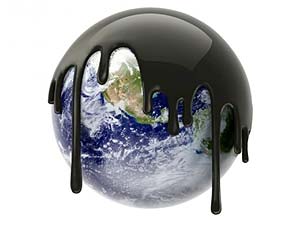
Neil Zusman (2010-08-24).








